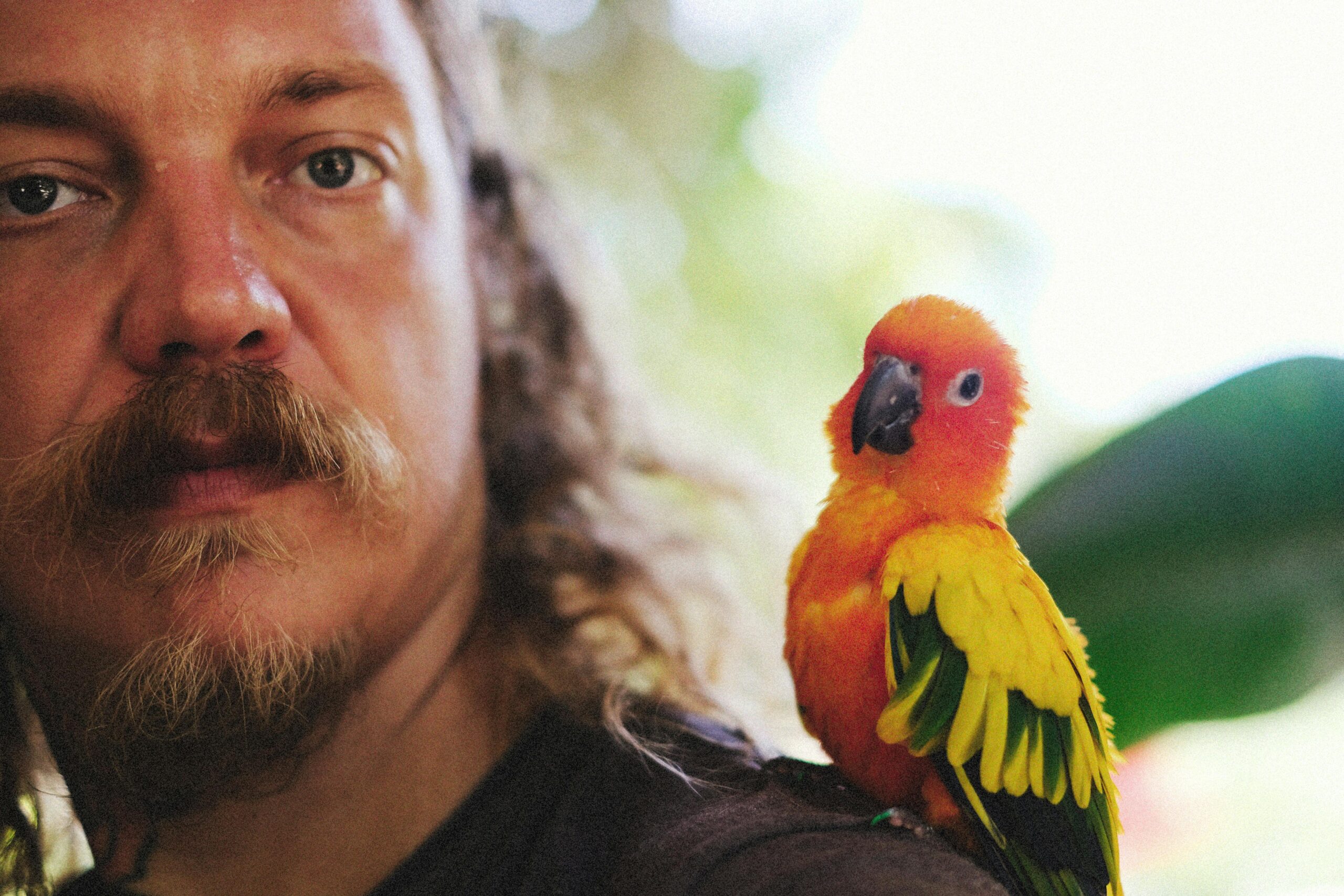Training a pet parrot to talk is a rewarding experience that can enhance the bond between you and your feathered companion. Parrots are known for their ability to mimic human speech, but teaching them to talk requires patience, consistency, and understanding of their behavior. Not all parrots will learn to talk, and the ones that do may develop at different rates, but by using the right techniques and creating an engaging environment, you can maximize your chances of success. Below is a detailed guide, presented in points, on how to train your parrot to talk.
1. Understanding Your Parrot’s Species and Capabilities
Before starting training, it’s essential to understand your parrot’s species, as not all parrots have the same capacity for speech. Some parrots are naturally better talkers than others.
- African Grey Parrots: Known for their exceptional talking abilities, African Greys are considered the best mimics in the avian world. They can learn a wide vocabulary and even understand context in some cases.
- Budgerigars (Budgies): Though small in size, budgies are also excellent talkers. They are capable of learning many words and phrases, even outshining some larger parrots in vocabulary acquisition.
- Amazon Parrots: Another species known for its talking skills, Amazon parrots are good at learning phrases, songs, and even mimicking sounds with clarity.
- Cockatoos and Macaws: These parrots can learn to talk but are usually less verbose than African Greys or Amazons. They may only pick up a few phrases.
- Conures: Conures can learn some words, but they are not as inclined to talk as other species.
Knowing your parrot’s natural capabilities will help you set realistic expectations.
2. Building a Strong Bond with Your Parrot
Before starting formal speech training, it’s important to develop a strong bond with your parrot. Parrots are social creatures and respond better to someone they trust and feel comfortable with.
- Spend Time Together: Interact with your parrot daily outside of training sessions. This could include talking to them, playing, and offering treats. The more time you spend with your parrot, the more comfortable they will be with you.
- Establish Trust: Avoid forcing your parrot into uncomfortable situations. Let your parrot come to you on their terms, offering positive reinforcement such as treats when they do.
- Consistency: Make your presence a constant in your parrot’s life, as they will be more likely to listen to and mimic a familiar voice.
3. Creating a Stimulating Environment
Parrots thrive in environments that provide them with mental stimulation. A bored or stressed parrot is unlikely to learn new behaviors, including speech.
- Interactive Toys: Provide your parrot with toys that engage their curiosity and problem-solving skills. Toys that require manipulation or produce sounds can encourage vocalization.
- Visual and Auditory Stimuli: Parrots learn by observing and listening. Having a television or radio playing in the background can expose your parrot to a variety of sounds and words.
- Socialization: Parrots are more likely to mimic the speech they hear regularly, so interacting with them in a lively household can stimulate their desire to talk.
4. Choosing the Right Words
When training your parrot to talk, it’s essential to start with words that are easy for them to mimic. Short, simple words with clear sounds are best for beginners.
- Start with Simple Words: Words like “hello,” “hi,” “bye,” or the parrot’s own name are good starting points. These words are used frequently in everyday conversation and are easy for the parrot to understand.
- Repetition of Words: Repeating the same word or phrase consistently will help your parrot pick up on the sound. Use an enthusiastic tone to make the word more engaging for your parrot.
- Use Words with Meaning: It’s helpful to use words that are associated with actions or objects, such as “eat,” “water,” “step up,” or “come here.” This can help the parrot understand context over time.
- Avoid Overwhelming Your Parrot: Introduce words gradually. Teaching too many words at once can confuse your parrot, so focus on one word or phrase until they master it.
5. Using Positive Reinforcement
Positive reinforcement is key when training any animal, including parrots. Rewarding your parrot for good behavior encourages them to repeat that behavior.
- Offer Treats: Give your parrot a treat immediately after they successfully mimic a word or sound. The treat should be something they love, such as a favorite fruit or seed.
- Verbal Praise: Along with treats, use enthusiastic verbal praise to reinforce your parrot’s success. Phrases like “good bird” or “well done” in a happy tone can create a positive association with talking.
- Clicker Training: Some parrot owners use clicker training to mark the exact moment the bird performs the desired behavior. A clicker makes a sound, and the bird knows a reward is coming after hearing the click.
6. Repetition and Consistency
Training a parrot to talk requires repetition and consistency. Without regular practice, your parrot is less likely to retain what they’ve learned.
- Daily Practice Sessions: Set aside specific times each day to work on talking with your parrot. These sessions should be short, around 10–15 minutes, to prevent your parrot from becoming bored or frustrated.
- Repeat the Same Words Frequently: Use the same word or phrase consistently during practice sessions. You can also incorporate these words into your daily conversations with the parrot.
- Be Patient: Parrots learn at their own pace, and it can take weeks or even months for them to master a word. Patience is essential throughout the process.
7. Incorporating Visual and Contextual Cues
Parrots often learn to associate certain words with actions or objects, and this contextual learning can enhance their ability to talk.
- Pair Words with Actions: For example, when you greet your parrot with “hello” each time you enter the room, they may begin to associate the word with your arrival. Similarly, say “bye” when you leave.
- Use Objects: Hold up an object like a toy or a piece of fruit and say its name repeatedly. This can help your parrot connect the word with the item.
- Use Hand Gestures: Parrots can also respond well to hand gestures. For example, waving when saying “hello” or “bye” can reinforce the word.
8. Avoiding Negative Reinforcement
While positive reinforcement is important, it’s equally important to avoid negative reinforcement, which can discourage your parrot from learning to talk.
- Never Punish Your Parrot for Not Talking: Parrots, like humans, have off days where they may not want to talk. Punishing them for not mimicking words can create stress and inhibit their learning.
- Avoid Yelling or Showing Frustration: If your parrot doesn’t pick up a word right away, avoid raising your voice or getting frustrated. Parrots are sensitive to emotions and may become scared or disinterested if they sense frustration.
9. Using Technology to Support Learning
Modern technology can supplement your efforts in training your parrot to talk.
- Recordings of Your Voice: You can make recordings of yourself saying words or phrases and play them for your parrot throughout the day. Hearing these recordings repeatedly can reinforce learning, even when you’re not present.
- Voice-Activated Devices: Some parrots respond well to voice-activated devices that can say words when the bird makes a noise. These devices provide automatic reinforcement of the training.
- Apps and Tools for Parrots: There are specific apps designed to help train parrots by playing words and phrases at intervals, which can help your parrot become more familiar with speech patterns.
10. Encouraging Natural Vocalization
Parrots often vocalize on their own, and encouraging these natural sounds can be a stepping stone to speech.
- Respond to Their Natural Sounds: When your parrot makes sounds or attempts to talk, respond to them positively, even if the sounds are not fully formed words. This encourages them to continue vocalizing.
- Modeling Behavior: Parrots are more likely to imitate sounds they hear frequently. Talk to your parrot as much as possible, modeling the behavior you want them to replicate.
11. Understanding and Working with Your Parrot’s Unique Personality
Each parrot has a unique personality, and understanding their quirks and preferences can help you tailor your training approach.
- Be Observant: Pay attention to when your parrot is most active and vocal. Use these moments to practice speech training.
- Respect Their Limits: Some parrots may not have the inclination to talk as much as others. If your parrot isn’t interested in talking, don’t force the issue. Celebrate the words they do learn, and continue bonding through other activities.
12. Ensuring Proper Care and Health
A healthy parrot is more likely to be a happy and talkative parrot. Ensuring your bird’s physical and emotional well-being is key to successful training.
- Balanced Diet: A well-nourished parrot will have the energy and motivation to learn. Provide a balanced diet of pellets, fruits, vegetables, and occasional seeds.
- Clean Living Environment: Keep your parrot’s cage clean and provide fresh water daily. A clean, comfortable environment will reduce stress and make your parrot more receptive to training.
- Veterinary Care: Regular vet check-ups ensure your parrot is in good health. Illness or discomfort can affect their ability and desire to talk.



